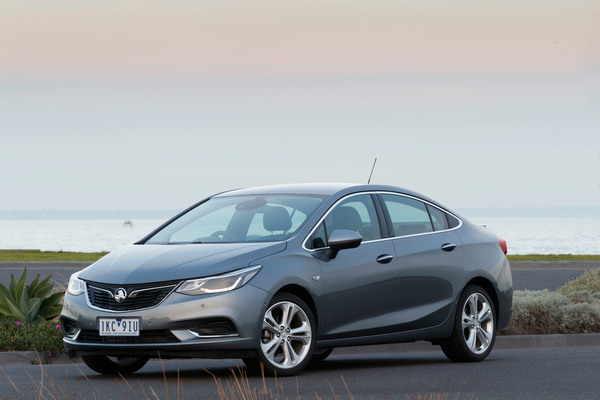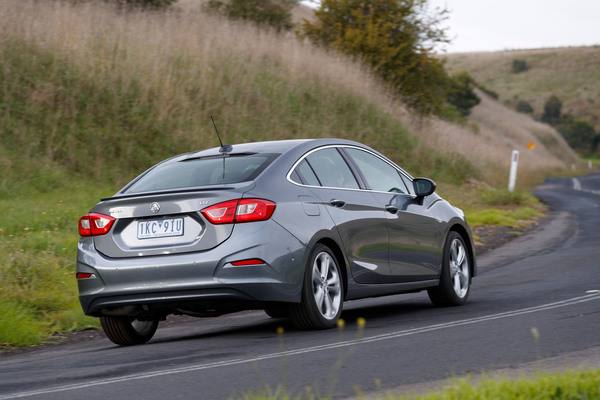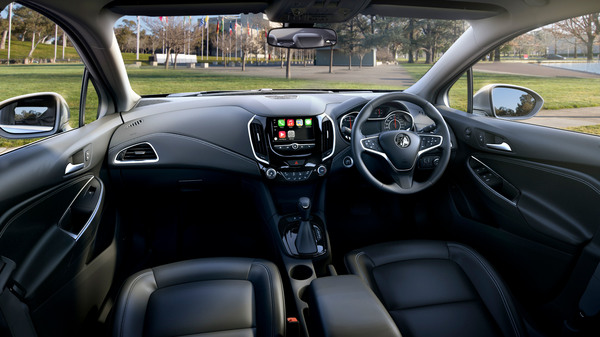
By Ewan Kennedy, Marque Motoring
Holden is very serious about its small-to-medium Astra range. In December 2016 it launched a five-door hatch; a four-door sedan – the subject of this test in topline LTZ format – came out in June this year, and a station wagon will be added to before the end of the year.
Sales of the hatch weren’t as high as GM-Holden anticipated and weren’t helped by the traditionally slow January/ February holiday and back-to-school periods so recommended prices were dropped a few months after the launch to try and kick things along.
Astra sedan prices probably started lower than originally anticipated, from $20,490 through to $29,790, putting them right into the thick of the fray in this class.
Dealers are under pressure to get the Astra range up and running ASAP and can often be talked into picking up some, maybe even all, of the on-road charges.
The Astra sedan is built in a GM factory in South Korea. It’s finished to the very high standard that has impressed us in vehicles from that country in recent years.
Holden Astra sits on all-new vehicle modular architecture that trims weight by as much as 120 kg compared to the old model. This adds performance at the same time as fuel consumption decreases.
The shape of Astra sedan is neat enough but doesn’t really break any new ground in its rear end. A sporting rear lip spoiler is fitted to the two topline models, the LT and LTZ.
Infotainment is centred around a colour touchscreen that’s neatly integrated into the stylish dashboard.
It uses the latest Holden MyLink system with Apple CarPlay and Android Auto. There’s USB input with iPod connectivity. A clever design feature is the thumb rest to steady your hand while reaching the screen with your forefinger.
There’s a comprehensive range. The entry level Astra LS has 16-inch alloy wheels, a 7.0-inch colour touchscreen, steering wheel mounted controls, a six speaker audio system and cruise control.
Astra LS+ adds a leather-faced steering wheel, automatic high beam, LED daytime running lights (DRLs), Holden Eye forward facing camera, lane keep assist, lane departure warning, forward distance indicator, and forward collision alert.
The Astra LT features 17-inch alloy wheels, an 8.0-inch touchscreen and DAB+ radio. Heated door mirrors are handy in wet weather. It also has front park assist, side blindspot alert, passive entry, push-button start, advanced park assist, and automatic wipers.
The topline Astra LTZ we tested had 18-inch alloy wheels, climate controlled air, an electric sunroof, chromed exterior window surrounds, chromed interior highlights combined with piano black (the latter, as usual, picking up dust within minutes of it being brushed off…) and heated front seats.
The only engine offered in Holden Astra sedan is a 1.4-litre turbo-petrol producing 110 kW of power and 240 Nm of torque in the six-speed automatic we tested. Astra hatch comes with this engine, but has the option of a more powerful 1.6 unit. This may, or may not, be offered in the sedan later.
On the safety front, all models have six airbags, electronic stability control (ESC), automatic headlights, a rear view camera and rear park assist. Features are added to as the model grades increase, for details the Models section of this report.
The front seats are a good size, and comfortable in normal driving, there’s less side support than you may like if you do hammer it along. Try for yourself on the sort of roads you normally drive on, and perhaps take some potential passengers along for the ride.
Rear seats have space for two adults and they will have enough legroom unless those in the front like their seats well back. A third grown-up can fit without too much hip and shoulder rubbing. Three kids is a more likely load.
The boot is well shaped and a good size, its added volume being an advantage in any sedan when compared with a hatch. However, the coupe-like slope at Astra’s rear does mean it can’t carry very bulky items.
The 1.4-litre turbo engine is a lively unit that’s a real pleasure to sit behind. There’s some turbo lag, but once that has passed there’s plenty of torque to provide good hill climbing and to safe overtaking.
Fuel consumption was in the fives and sixes during motorway sections of our drive route. This rose to seven to nine litres per 100 kilometres around town. Perfectly acceptable in this class and a sign that the reduced weight of the car certainly plays its part.
GM-Holden engineers and stylists were heavily involved in the global scene from the earliest days of this Astra’s design. So it doesn’t surprise that its steering and ride are very much tailored to Australian driver tastes – and harsh Aussie road conditions. Commodore buyers moving down to an Astra will have plenty to like.
Compared to the Euro versions of the Astra on-centre steering feel has been softened a little to make it less sensitive in the straight ahead position. This makes it suited to our rougher than average roads. Once you turn the wheel the feel comes in early and is nicely direct. There’s seldom any need to correct it mid corner.
The suspension is generally supple, but the fashionable low-profile tyres on the Astra LTZ can be a bit over firm at times. There’s some road roar on coarse-chip roads, again partly due to the tyres.
A new Holden Commodore is coming in the first few months of 2018. Somewhat oddly it won’t be offered as a sedan.
Those who really want a sedan and who are considering moving down to a smaller car may well find the all-new Astra sedan fills the bill neatly.
Model range
Astra LS sedan: $20,490 (manual), $22,490 (automatic)
Astra LS+ sedan: $22,740 (automatic)
Astra LT sedan: $25,790 (automatic)
Astra LTZ sedan: $29,790 (automatic)









